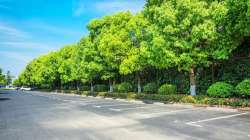Green Delhi: All you need to know about the Miyawaki technique
Professor and botanist Dr. Akira Miyawaki developed the Miyawaki technique in 1980. He was awarded the Blue Planet Award in 2006. More than 2000 forests have been created worldwide using this method.

The Municipal Corporation of Delhi (MCD) plans to expand the use of the Miyawaki technique to create micro-urban forests in densely populated neighborhoods. This decision was made based on positive feedback from seven sites where the technique has been implemented in the last two years, and the MCD aims to use it in ten more areas this year.
Locations distributed across 10 acres include a 20-month-old Miyawaki forest in Mayur Vihar 33 where over 7000 saplings were planted, a 12-month-old forest in Dwarka A-2 block with 10,000 saplings, a year-old Sahu ji Park in Mayur Vihar, and a 6-month-old park in Dallas. There is a 22-month-old forest in Transport Nagar, and a 2-month-old forest in Dwarka Sector 17 with 35,000 saplings.
MCD representatives recently informed the committee for Air Quality Control that some abandoned areas had been transformed into green lungs utilising the Miyawaki technology. According to them, this process takes 4–5 years instead of the 10–12 years required by traditional planter methods for trees to reach maturity.
What is the Miyawaki technique?
The Miyawaki method was developed by Japanese botanist Akira Miyawaki in 1980 to grow thick forests of native plants. This innovative technique, which involves planting a forest in someone's backyard, is utilised to reforest cities all over the world.
Miyawaki urban forests are intriguing, intricate ecosystems that are in harmony with the soil and climate of the present condition. With this technique, more than 2000 forests were successfully planted across the world. Professor Akira Miyawaki was awarded the Blue Planet Award in 2006.
Minimum needs for Miyawaki technique afforestation
- The Miyawaki afforestation technique only needs a very small area—at least 20 square feet.
- To minimise space and encourage dense plant development, seeds must be planted relatively closer. This enables young trees to defend one another and stop sunlight from penetrating the forest floor, inhibiting the growth of parasitic plants.
- This approach results in vegetation that is 30 times denser and grows 10 times more quickly than usual.
- The Miyawaki approach requires such forests that can be maintained for a minimum of three years.
FAQs
Q1 Who developed the Miyawaki technique?
Professor and botanist Dr. Akira Miyawaki developed the technique in 1980.
Q2 Dr. Akira Miyawaki won the Blue Planet award in which year?
2006
ALSO READ | Baba Vanga’s 2023 prediction comes true! Solar storm to hit Earth soon